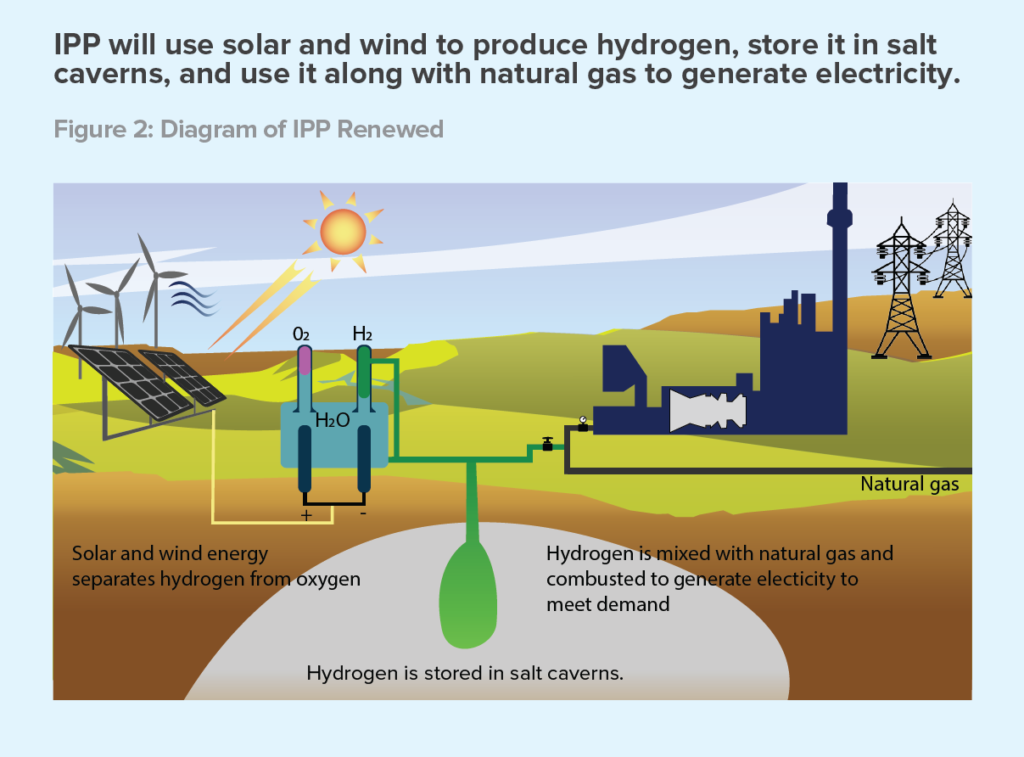Having provided coal-generated electricity since the mid-1980s, the Intermountain Power Agency (IPA) has decided to build a combined-cycle gas power plant by 2025 to replace the coal-fueled generators. The plan, known as IPP Renewed, will include a turbine that runs on a mixture of natural gas and hydrogen, with 30% hydrogen at start-up, transitioning to 100% hydrogen by 2045. Plugging into the Future of Electricity explores the IPP Renewed endeavor and its economic impact to the state and local communities.
The Utah Foundation undertook this project on a consulting basis at the request of IPA.
KEY FINDINGS OF THIS REPORT
- The construction period, most of which will take place from 2022 through 2026, will represent a $2 billion investment, increasing the state’s gross domestic product up to 0.18% annually from 2022 through 2026. It will directly support an average of 500 jobs annually during this period which will in turn support up to an additional 600 jobs across the state.
- Most of the construction jobs will be located in Millard County, where the economic benefits represent a much larger share of the local economy. There, the 450 construction jobs annually to build the new plant will represent 10% of the county’s average employment. This estimate does not include the extra jobs created through supply chain purchases or employees’ additional earnings.
- After completion of the project, 120 permanent IPP jobs will support up to 540 additional jobs from suppliers and the jobs demanded by increased regional earnings.
- The construction of the new converter stations will maintain a high level of reliability on the direct current transmission line and extend its life for decades to come. This could attract renewable projects to locate in the area, while providing carbon-free electricity to southern California and potential Utah purchasers.
- After completion of the project, extra capacity will be available on the transmission lines. This means that other generation projects could develop in the area to help meet the demand for electricity in Southern California. If the transmission line were fully utilized, it could mean a direct effect of 1,300 temporary jobs and an additional 91 ongoing jobs in the community, which could support an additional 1,148 jobs during the construction phase and 410 permanently.
- There are expected additional economic benefits from the construction of renewable energy and green hydrogen infrastructure, opportunities for natural gas and other commodities storage, and the emerging production, storage and export of hydrogen gas.


